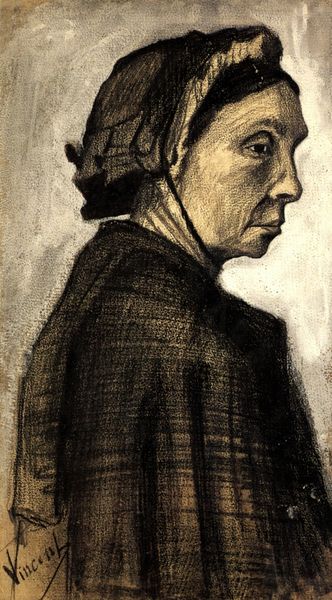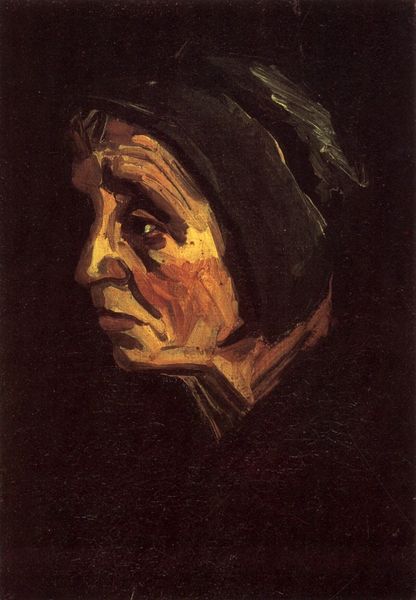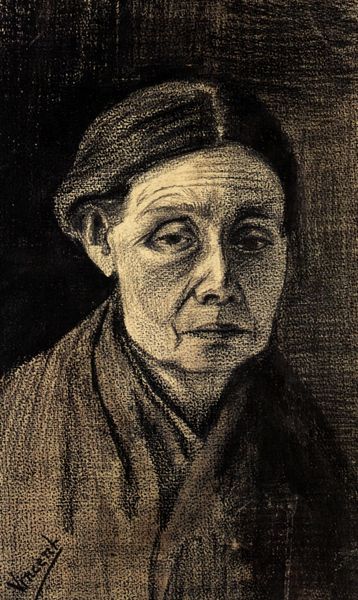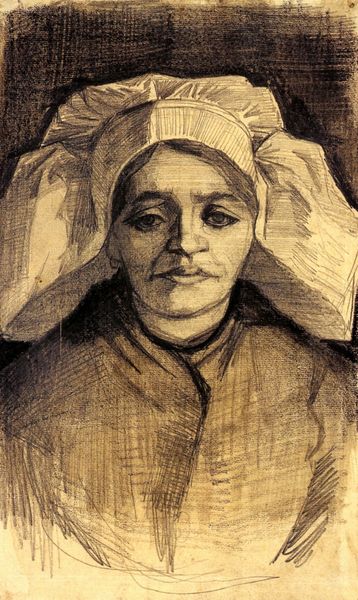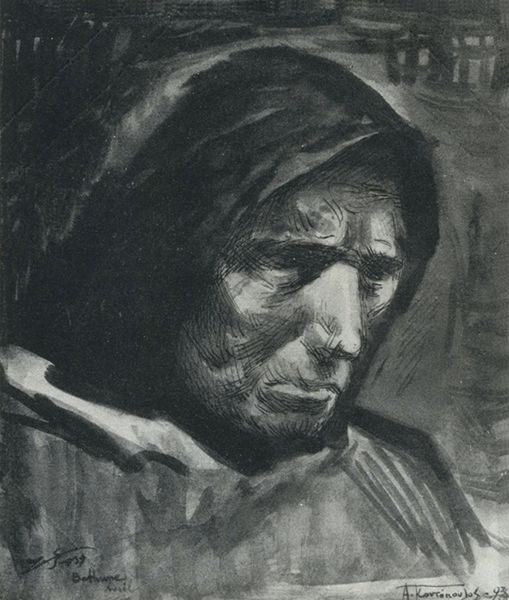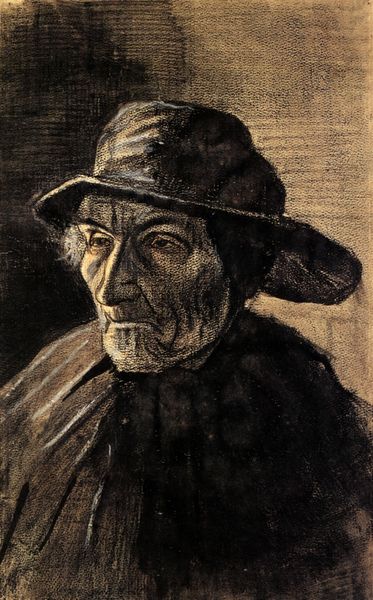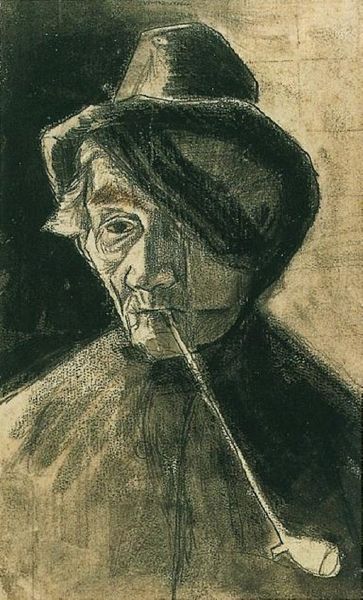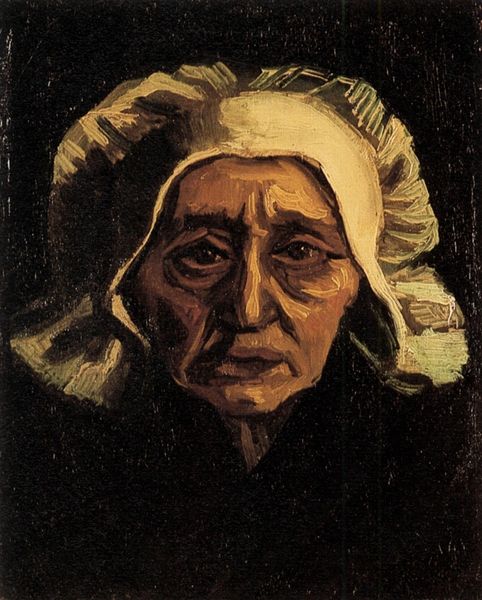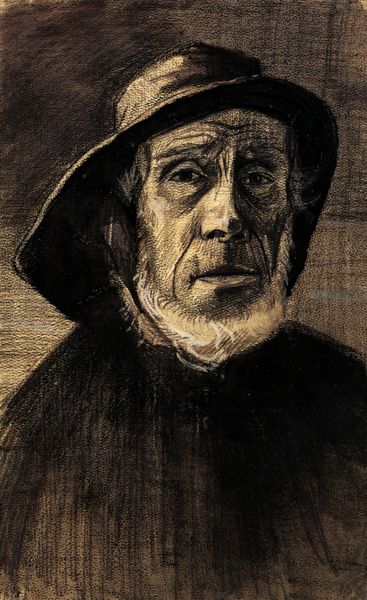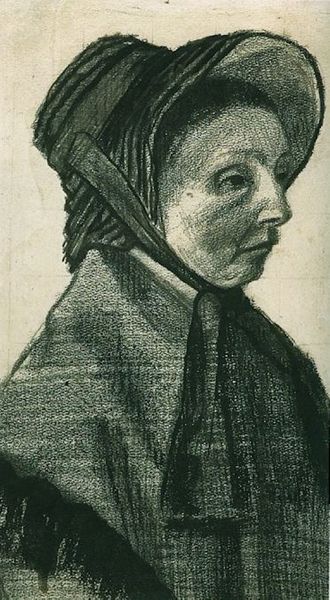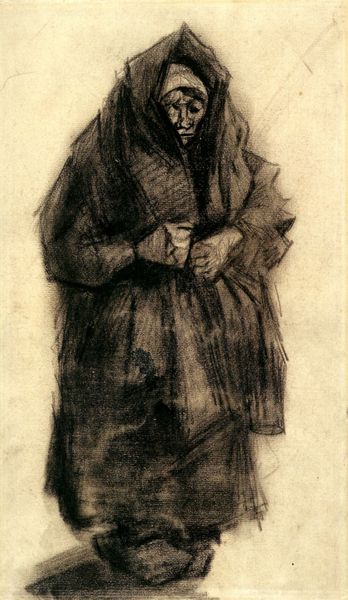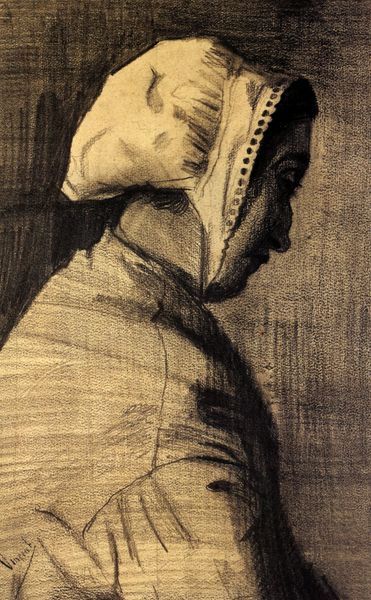
drawing, charcoal
#
portrait
#
drawing
#
charcoal drawing
#
charcoal
#
post-impressionism
Copyright: Public domain
Vincent van Gogh created this work on paper, “Head of a Woman,” using a combination of pencil, black crayon, and chalk. It is important to consider how the development of art institutions may have contributed to the making of this work. In the Netherlands during the late 19th century, realism was on the rise, influenced in part by new art academies teaching rigorous observational drawing. Van Gogh studied this method early in his career. But this work may have had other influences. We know that Van Gogh was interested in the representation of the working classes and his own approach was radical, showing a directness and lack of idealization that challenged social norms of the time. The work also brings to light questions about the public role of art. Is this portraiture, or social commentary? How might Van Gogh's personal politics have influenced his choice of subject matter and style? These are all questions that art historians might ask. To discover more, you might explore Van Gogh’s letters, and also delve into social histories of the Netherlands in the late 1800s.
Comments
No comments
Be the first to comment and join the conversation on the ultimate creative platform.
